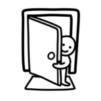Philosophy
Why We Do What We Do
This is the backbone of all of our programs and curricula. Our understanding of child-development and language acquisition comes from these sources.
DEVELOPMENTALLY APPROPRIATE. The tools we use and word groups we choose are not outside of the child’s developmental limits. We have used the research related to Bloom and Lahey’s Taxonomy of Language to inform our choice and sequence of phrases we expect a child to speak. Here is a chart of the Bloom & Lahey Model: Normal Developmental Sequence of Expressive Language we found informative.
We include learning chore routines in the Language Mama book, but we recommend choosing chores appropriate for the age-range of your students. Use this chore list which originated from Maria Montessori as a guide.
LINGUISTICALLY SOUND. Our curricula all utilize the Total Physical Response approach to “leveling up” a child’s recognition and understanding of new words. Listening to a native speaker’s natural accent is critical to proper pronunciation.
First language is always received from natural relations, specifically mothers, and in all cultures you will find narratives (simple stories) and songs (nursery rhymes) are the vehicles by which mothers build a vibrant base for their child’s language.
CULTURALLY RELEVANT. All languages exist within culture and cannot be effectively removed from their original cultural contexts. By incorporating cultural routines and using them as a structure upon which to introduce language, we can help children learn a language AND its patterns and procedures within a practical context. These contexts usually include chores, daily routines of work and play, holidays, and any cultural framework that determines “when” you hear or speak specific phrases.
This concept exists in several language learning methods, but we have done most of our research into the Charlotte Mason and her recommended language method, created by Francois Gouin.
The Art of Teaching and Studying Languages free Google Ebook
The Art of Teaching and Studying Languages $.99 on Amazon Kindle
RELATIONALLY PRACTICAL. Every acquired language only sticks if you use it. You will only use it if you have a natural positive relationship with another speaker of that language. Like all friendships, they will grow naturally on their own as time spent together doing things, playing, and participating actively in conversation create the atmosphere for growth.
For children, this relationship must be a positive one with peer age group children or a playful, loving relationship with the adult language helper. Our curricula attempts to build this relationship by providing a framework for: 1) regular frequent interaction with language helper, 2) playful learning games and activities to create positive associations with language and the native speaker, 3) learning popular games and practicing “pretend” in the new language which will b e a springboard for natural play with other peer-aged children who also speak that language.
